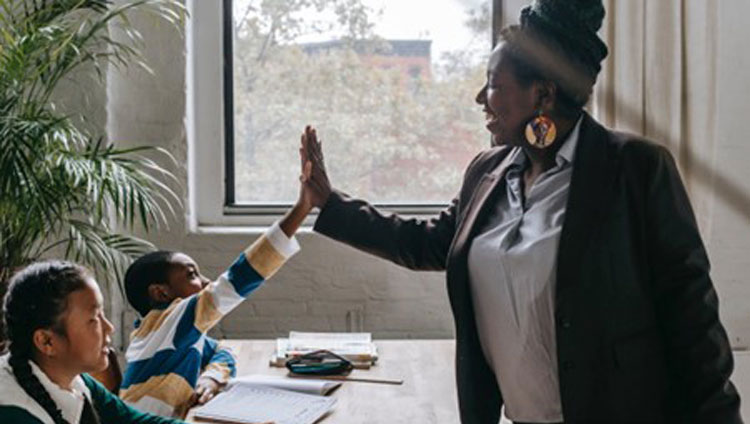Tolerance is a vital element that defines how we interact with others. Being tolerant allows you to be accepting of others, regardless of the existence of diverse opinions. Bias and bigotry are detrimental societal factors that must be handled with ease and care. However, this is not possible without learning tolerance. Hence, accepting others is one of the most important lessons to learn in school, college, or even the workplace. Without that, individuals start to suffer backlash, isolation, and the feeling of exclusion.
Hence, in a nutshell, one realizes the significance of tolerance in a safe space in times of acute stress. The key to equal rights and equity is tolerating everyone surrounding you. That includes embracing their distinct behaviors and opinions. Hence, this article elaborates on how to teach tolerance and the various means by which someone can do so.
Importance of Tolerance
When it boils down to the core of it, tolerance is the ability to respect others as equals. Hence, it encourages people to perceive others based on their humanity, not their viewpoints. Tolerance also aids you throughout your academic career, as it allows you to learn how to deal with others, regardless of their stance. Here you can check our intersectionality essay examples revolving around the interconnections within society. You acquire the skills to integrate within your community through examples of essays. The fundamental awareness of intersectionality through a sample essay strengthens your role in your community.
Types of Tolerance
Tolerance education in school is necessary for multiple reasons. First, it allows youngsters to acquire social skills very young. This pushes them to embrace others and choose their friends based on personality, not opinions or judgments. Moreover, exercising tolerance through the five distinct types benefits your study, business, and personal life.
1. Religious Tolerance
Tolerance aims to achieve a harmonious environment and encourages others to recognize individual rights. This leads to a willingness to avoid any problematic clashes. A significant example is portrayed through religious tolerance. People who seek religious education should not be cast off from society. As there are various religious beliefs, accepting and being tolerant is a sign of respecting the individual.
2. Racial Tolerance
Racial bias is, unfortunately, a prevalent issue in every society. Tolerance is visibly lacking in these interactions, whether a slur thrown at a person or police brutality. Even a study published in Educational Researcher portrays how educators often have an implicit bias against African Americans. This inevitably led to racial disparities in scoring. Hence, focusing on tolerance in class allows educators and students to be more compassionate toward one another.
3. Thought Tolerance
Have you ever debated with someone with controversial opinions? Maybe they have incredibly different thoughts as compared to you. While it might take you by surprise, reacting with aggression is not the answer. In fact, practicing tolerance is the key here, as you will face such clashes even in business meetings. Accept that individuals will own principles based on their own ideals.
4. Social Tolerance
Social intolerance has been highlighted across history. There were many instances where different social classes were discriminated against. Multiple movies portray society’s viewpoints on people who do not belong to the same social class. However, this intolerance subjects individuals to hatred, resentment, prejudices, and inevitable fear.
5. Sexual Tolerance
Sexuality is closely tied to identity. Hence, having someone discriminate against someone’s sexuality directly attacks individuality and personality. That’s why schools, workplaces, and colleges should emphasize the acceptance of the LGBT community. A lesson or course should be given as an awareness session. In such a session, the aim is to educate others on the diversity and importance of sexuality and embracing it.
Strategies for Teaching Tolerance & Inclusion in Class
The strategies discussed at length below apply to both the classroom and workspace. Regardless of your social power, you can always contribute to society. Remember, your control over students is incredible if you’re a teacher. At such young ages, their minds are still malleable, which enables them to retain information much faster. Hence, optimize the use of the following.
1. Do Not Shy Away From Confrontation
As a teacher, a common reflex to witnessing intolerance amongst students is often to brush it off. You might feel uncomfortable addressing the issue or calling someone out. However, it’s essential to lead by example. This entails educating children about how to accept one another’s opinions, backgrounds, and cultures. However, as children are naturally curious, it might be challenging to pinpoint the exact moments when someone portrays intolerance.
2. Educate Yourself
As human beings, we often want to believe that we intrinsically have no bad bones in our bodies. However, you will tend to address situations incorrectly every now and then. A quick google search will provide you with all the necessary answers, so do not shy away from it. Learning for Justice enables educators through their mission of being a catalyst for racial justice through numerous free resources.
3. Create Comfortable & Safe Spaces
Having inclusive books, curriculums, topics, and discussions is vital. However, it’s often not enough to focus solely on materialistic items. Instead, in the case of some injustice event occurring in the country, some students might feel more stressed. Ensure you emphasize the safety of the classroom. Moreover, have individualized discussions with students if needed. Making everyone feel safe and accepted is any educator’s responsibility.
Conclusion
Inclusion is merely a part of tolerance, and tolerance is crucial to maintaining a just society. Hence, addressing tolerance-related issues throughout classes and the workspace is proven to be necessary. It will strengthen relationships between people and allow individuals to maintain a healthier relationships with themselves.
However, eradicating intolerance in society is not a trivial matter. The incidents seem to be neverending. Regardless, the most essential step is starting on a smaller scale. That’s why educators’ power over their pupils is a vital tool. Mold young minds with what is, and emphasize the need to be tolerant and compassionate with others.

